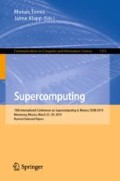Abstract
The Schrödinger equation is practically the base of quantum mechanics and the most use technique to solved this differential equation has been the separation of variable technique. From separation of variable process is possible obtain the time independent Schrödinger equation [TISE]; a useful equation for independent time potential. However, there are another situations in quantum mechanics that involves other mathematical ways to solve this equation. The methods implemented in this document are given by different potentials and avoiding the conventional separation of variables. The goal of this work is search wave functions that satisfy the Schrödinger equation with other unusual conditions. That makes easier reach more specific solution than in comparison are complicated to reach using the common separation of variables.
Access this chapter
Tax calculation will be finalised at checkout
Purchases are for personal use only
References
Griffiths, D.J.: Introduction to Quantum Mechanics. Pearson Prentice Hall, Upper Saddle River (2005)
Hassanabadi, H., Hooshmand, P., Zarrinkamar, S.: The generalized uncertainty principle and harmonic interaction in three spatial dimensions. Few-Body Syst. 56(1), 19–27 (2014). https://doi.org/10.1007/s00601-014-0910-7
Nozari, K., Azizi, T.: Gravitational induced uncertainty and dynamics of harmonic oscillator. Gen. Relativ. Gravit. 38(2), 325–331 (2006)
Kempf, A., Mangano, G., Mann, R.B.: Hilbert space representation of the minimal length uncertainty relation. Phys. Rev. D 52, 1108 (1995)
Bastard, G.: Wave Mechanics Applied to Semiconductor Heterostructures. Editions de Physique, Les Ulis (1988)
Acknowledgement
Special thanks to the National Institute of Supercomputing of Ecuador for allow us to perform the simulations in the Quinde I supercomputer, located at Innópolis, Urcuquí, Ecuador.
Author information
Authors and Affiliations
Corresponding author
Editor information
Editors and Affiliations
Rights and permissions
Copyright information
© 2019 Springer Nature Switzerland AG
About this paper
Cite this paper
Ramírez-Velásquez, J.M., Villegas, I. (2019). Solution of Schrödinger Equation Not Implementing Conventional Separation of Variables: Using the Trial and Error Brute Force Permutation Method. In: Torres, M., Klapp, J. (eds) Supercomputing. ISUM 2019. Communications in Computer and Information Science, vol 1151. Springer, Cham. https://doi.org/10.1007/978-3-030-38043-4_9
Download citation
DOI: https://doi.org/10.1007/978-3-030-38043-4_9
Published:
Publisher Name: Springer, Cham
Print ISBN: 978-3-030-38042-7
Online ISBN: 978-3-030-38043-4
eBook Packages: Computer ScienceComputer Science (R0)

